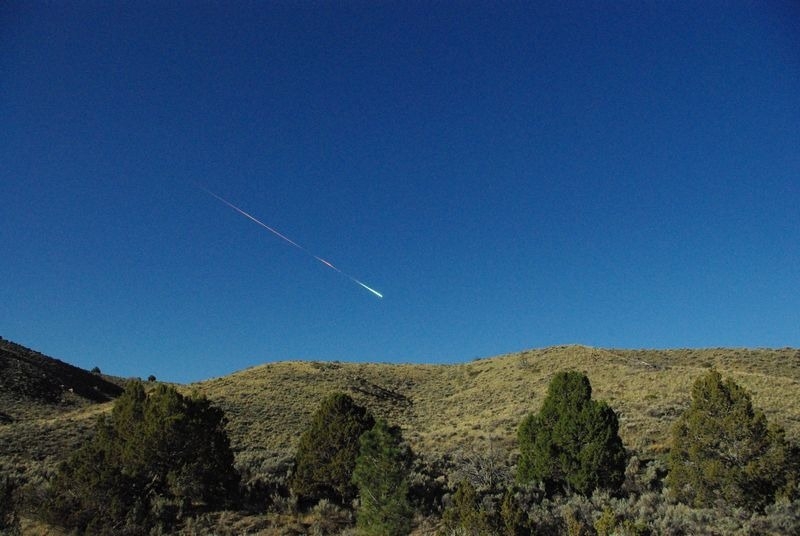
© Franck Marchis' Cosmic Diary blogMeteorite expert and researcher Peter Jenniskens with a fragment of the bolide seen over California on April 22, 2012.
Meteorite hunters have been successful in locating fragments from the huge meteor visible in the daytime skies over California last weekend. One of the successful hunters was Peter Jenniskens, an expert in meteors and meteorites, perhaps best known for retrieving the fragments of
asteroid 2008 TC3 which fell in Sudan in 2008.
Astronomer Franck Marchis wrote in his Cosmic Diary blog that Jenniskens realized the size of the California meteor was very similar to 2008 TC3, and so fragments should have reached the surface, just like they did in 2008.
Jenniskens went out searching and found a four-gram fragment of the meteor in a parking lot in Lotus, California.
Update: NASA and the SETI Institute are asking the public to submit any amateur photos or video footage of the meteor that illuminated the sky over the Sierra Nevada mountains and created sonic booms that were heard over a wide area at 7:51 a.m. PDT Sunday, April 22, 2012.
Marchis wrote that several scientists from the Bay Area met at NASA Ames Research Center on April 24 to discuss a strategy for a search campaign, examining a radar data map which showed that dozens of fragments from the 100g to 1 kg range may have reached the ground.


Comment: We've noted for several years that the amount of space debris coming in or around the planet has been on the rise. Have a look at some of these articles for more info.
The Hazard to Civilization from Fireballs and Comets
Cosmic Changes, Planetary Instability and Extreme Weather
And keep an eye on this section: Fire in the Sky, as we continue documenting these occurrences.